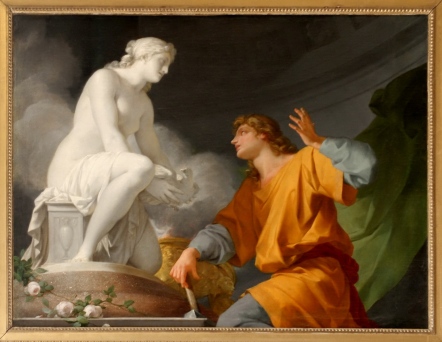Tags
ace, aromantic, aromanticism, asexual, asexuality, limited, media, representation
In most of the news articles that I’ve found online, there have been some strange similarities. One, and the most obvious, is that they’re rarely written by ace or aro spectrum people. And two, they generally always talk about the same thing in the same way.
Most of them start off with a definition of asexuality, without really defining it. They explain that sexuality is the lack of sexual attraction. Okay. Well, what is sexual attraction? If the article is geared toward the 99% of people for whom sexual attraction is a normal, privileged part of their life, then this definition does nothing but paint a bright line saying ‘asexuals aren’t like us.’ The aromantic spectrum of asexuality is rarely, if ever, addressed.
This lack of aromantic viewpoints could just be because of the speakers though. Most often, they are people in relationships, people who explain that their relationship is just the same as every other relationship. To drive this point home, many of them even add that they sometimes do have sex, despite being asexuals. Almost always, these couples are heteroromantic and cisgender.
When I researched asexuality, I was doing so as an ally. The idea that I could be asexual, much less a sex-repulsed aromantic asexual, seemed ridiculous in light of the media’s image of asexuals.
Curious, I looked up various types of attractions and ideas. There was so much that wasn’t being said! It was only after months of research and some soul-searching that I realized that these labels, far removed from the white-washed image of the media, applied to me.
Sexuality and sexual expression is something that’s been explored in art, music, dance, and cultural rituals since mankind was in its infancy. And yet, like the discovery of negative values in mathematics, very little was discovered about asexuality and asexual or aromantic expression until recently.
We, as people on the aromantic and asexual spectrum, are something that the world isn’t entirely sure of yet. Often, it’s this reasoning that leads to the articles that I mentioned above. But is that a good reason? These articles provide an extremely limited view of asexuality, one that, though valid, exists in a limbo where it says a lot without explaining anything to people who don’t fit into that mold.
Because, even though people aren’t sure of what to think about asexuality, painting us in a heteronormative light isn’t necessarily the way to be understood. We are different and should celebrate and inform people of our differences. I understand that the intricacies of asexual and aromantic spectrum people don’t make for a good sound bite, but sometimes it isn’t a good sound bite that people need.
I’m a sex-repulsed aromantic asexual who loves women and is agender. I don’t have sex ever. I don’t want to fall in love or have a fling. I don’t want to have a relationship. I’m neither feminine or masculine and exist in the gray area of most identities.
Not everyone is like me, but some are.
And our stories deserve to be told, too.


” One, and the most obvious, is that they’re rarely written by ace or aro spectrum people.”
Yup 🙂
I did come across an awesome article in New York’s Modern Love category, “Asexual and Happy”, written about the author’s own experiences.
LikeLiked by 1 person
Cool 🙂 I’ll definitely have to check it out!
LikeLike
Pingback: Linkspam: July 24th, 2015 | The Asexual Agenda
Pingback: Asexuality in the Media: Towards Diverse Representation | The Asexual Agenda
Good points you’re making, here. Also, reminder for me as an ace/aro writer not to simplify things too much.
LikeLiked by 1 person
Glad you think so 🙂
LikeLike
I got the impression that a lot of articles on asexuality interview just 1 asexual, and sometimes it is an aromantic asexual, such as Julie Sondra Decker who relatively recently had a book published on the subject: https://www.yahoo.com/health/asexuality-the-invisible-sexual-orientation-118122399807.html 😛
I did not think aromantic asexuals were never mentioned or ignored. I’ve never had the impression you did that most representation is… what you describe. I don’t know.
My perspective is more that it can be easy to conflate aromanticsm and asexuality into one thing. It can be tempting to give just one asexual person’s perspective, and a lot of those asexual people are more on the aromantic side of things: http://everydayfeminism.com/2015/04/asexual-aromantic-happy/ and for your average aro ace, where their asexuality stops and aromanticsm starts is not obvious.
When I search “Asexual” on Google News, most recent things to come up are: 1. http://www.newnownext.com/what-percentage-of-the-population-is-asexual/07/2015/ (no mention of it being possible to still have romantic relationships if you’re not interested in sex, no discussion either way, really)
2. http://www.advocate.com/pride/2015/07/21/21acestories-asexuality-synonymous-celibacy?page=full (which is flawed in many ways, see here: https://asexualagenda.wordpress.com/2015/07/25/asexuality-in-the-media-towards-diverse-representation/ for more details…) but which does discuss aromanticsm to some degree. I would say a lot of those quotes give the idea that asexuals mainly are romantic and the exception to the rule is aromanticsm so yeah, I’m not thrilled by that article.
3. There are a few other articles but like this one is near the top on a current search: http://zeenews.india.com/news/health/health-news/being-asexual-is-also-normal_1624600.html and this one which doesn’t erase aromanticsm.
I don’t know.
LikeLiked by 1 person
It could very well be that I’m mistaken. 🙂 These are just my observations from the articles that I’ve read, which is by no means comprehensive.
That said, I appreciate the articles you listed 🙂 I’ll definitely check them out!
LikeLike
Well it can also be that I’ve come across different articles than you. I didn’t first come across any news/media coverage of asexuality until after I had heard about asexuality through a twitter acquaintance and checked out the AVEN FAQ. So I don’t presume to think my experience is comprehensive either. 😉 We both just have experienced what we’ve experienced.
LikeLiked by 1 person